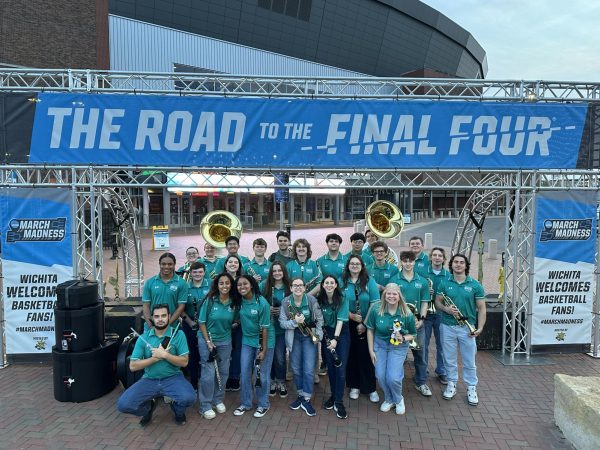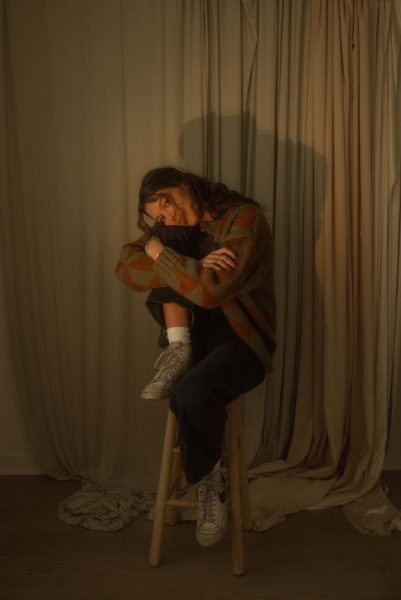Creative writing lecturer brings adventure writing to campus
Here’s a riddle for you: What do kayaking in seriously gnarly ocean swells and UNC Wilmington’s creative nonfiction writing department have in common? It’s a weird concept, but the answer is Virginia Holman.
Holman, a creative writing lecturer and author of “Rescuing Patty Hearst,” taught the special topics course “The Adventure Narrative” for the first time this semester. In addition to many pages of reading, she assigned the guinea-pig class three major assignments-write a story about someone else’s adventure, write about your own adventure, then go kayaking on North Carolina’s peaceful Black River.
The class embarked on their flat-water journey on Saturday, April 6. Student Trent Williams described the trip.
“The water is actually really black. The name Black River doesn’t kid around. It’s sort of iced-tea colored in the shallow parts where you can see the bottom,” Williams said. “The trees were so ancient-looking coming out of the black water, it was pretty surreal. Virginia was telling us they were something like 2,000 years old. It was a crazy feeling floating next to something that old.”
Williams took Holman’s Intermediate Creative Nonfiction class last semester, so he already knew a little bit about her double life as a water sports athlete.
“Virginia’s always talking about outdoor sports and things like that…I knew she would take us to something worth paddling out for,” he said.
Holman teaches more than just writing, too. As an instructor certified by the American Canoe Association, she is trained to teach kayaking.
“I’m just all fanatical about it, and love it and love [this] area,” Holman said. “It seemed like a natural match…It was a way to yolk together my environmental interest, my historical interest in the area, with the university’s larger goal, which really is to make our classroom and the coastal environmental interest one in the same, hence the kayaking trip.”
Her love for the outdoor sport started after Holman and her husband took a kayaking trip when they first moved to the Wilmington area. Then, her family surprised her with her very own water sport wonder- her first kayak.
“We have our truck outfitted so all the kayak gear goes underneath and we can sleep on the platform in the back of the truck. You know when you’re buying your vehicles based on your hobby, you’ve become a little bit fanatical,” Holman said. “I started expanding my range and taking navigation classes, moving from flat water to river water, from river to ocean, from ocean to surf, and then going out on my own, like circumnavigating Masonboro Island.”
Holman is your classic, grade-A daredevil. She attributes it to her “stubborn” personality, but it’s more than that-determination, perhaps.
She was determined to learn how to Greenland roll-a technique used to come up from capsizing, or flipping the kayak over.
“I had a hard time learning to roll, and so when I started learning to roll, I really got into it,” she said. “I tell my students that it’s okay if you’re a really slow learner; I’m a slow learner. But what really kills is how badly you want to learn it.”
In a similar way, Holman encourages students to get out of their comfort zone.
“The best part and the worst part is that she pushed us out of our comfort zone,” said Shelby Radovich, another student. “We had to interview someone for the class who had been on an adventure, but it couldn’t be anyone we were close to. So many cool stories came out of it because we had to go out of our comfort zone.”
Not only did the students perform several interviews, but they had to use and understand historical context related to their assignments.
Somehow, the daredevil writer related a water sport to the creative process.
“Greenland rolling is sort of like the class in some ways. It’s about the historical roots of kayaking, because the Inuit were the first to use the kayak,” she said. “The kayaking community is all about mentoring. Everything is passed down from one person to another…It’s almost like an oral tradition, and to some degree it informs my teaching.”
Holman speaks about kayaking like she is writing about it.
“… [Kayaking] keeps you engaged in the world, in a similar way, I guess, to writing, but too many writers tend to be too internally focused. But when you are out kayaking you can’t be- you have to transcend yourself. You’re out and you have to pay attention to the wind, the weather, the current. You engage with the world and pay attention to your place in it,” Holman said.
Kayaking also connects her to her childhood. Holman says that she was sort of a “wild child,” the wandering-through-the-woods kind.
“I could reconnect with that part of myself that sort of got sacrificed for so many years,” she said. “It’s funny, I get to do that now, explore the world in the same way, maybe even more so than I was able to do then.”
Holman has written a few stories about her own adventures already, but she hopes to explore other story ideas, such as being one of the few female kayakers on her trips.
And she has new ideas for the class, too. The course will be offered again in the spring of 2014.
“I keep calling this my beta version. I’d also like the next semester to focus on shorter work,” she said. “It would be really interesting and fun to bring in different narrative medias and have them telling a story using these different aspects in addition to the writing.”
It doesn’t seem like Holman will stop meeting her course, kayak and writing goals for anything.
“It’s like all the adventures we read in this class- there are tremendous obstacles, overcoming obstacles is very appealing. You can’t not do it,” Holman said.








